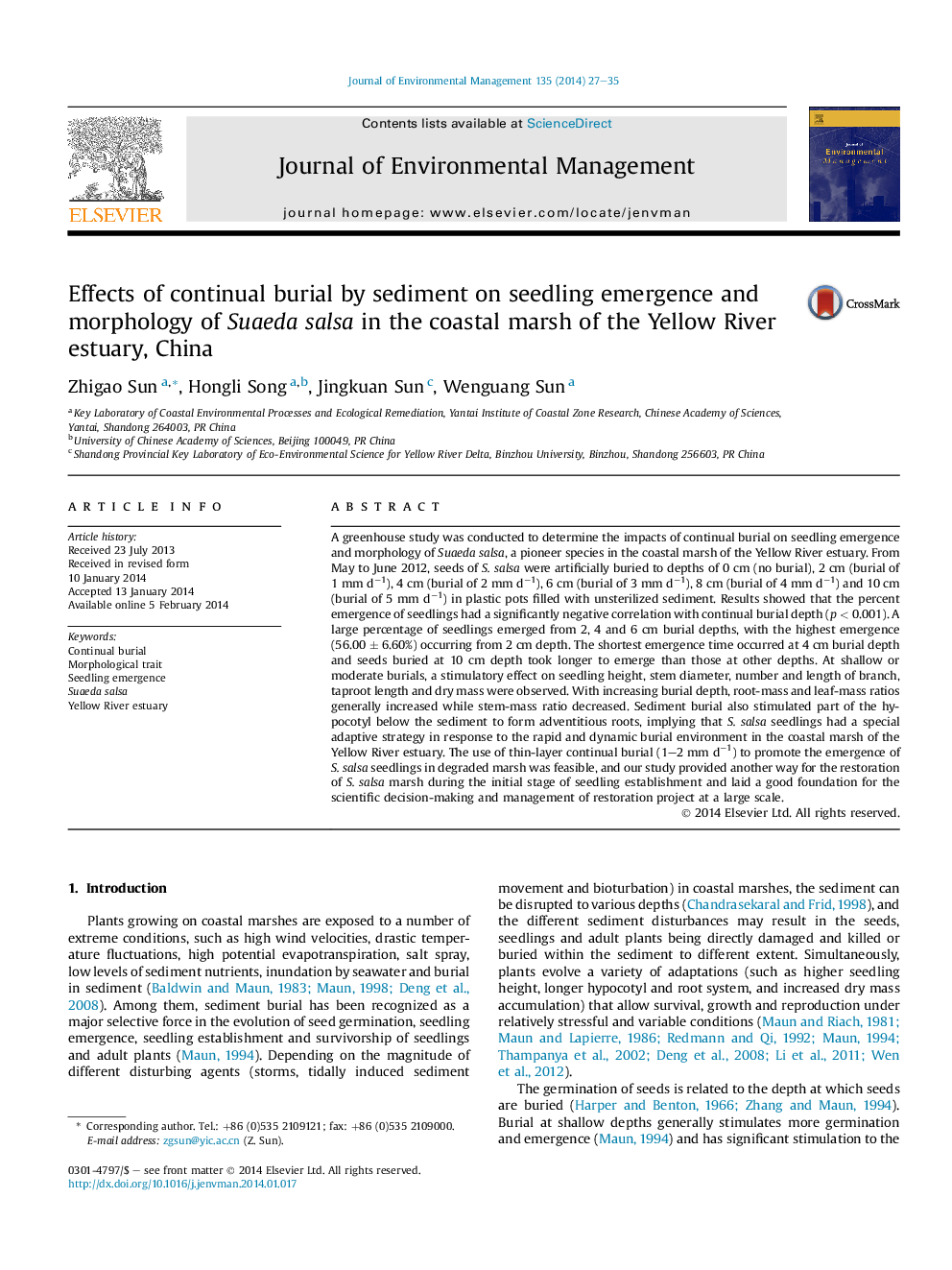| Article ID | Journal | Published Year | Pages | File Type |
|---|---|---|---|---|
| 7484007 | Journal of Environmental Management | 2014 | 9 Pages |
Abstract
A greenhouse study was conducted to determine the impacts of continual burial on seedling emergence and morphology of Suaeda salsa, a pioneer species in the coastal marsh of the Yellow River estuary. From May to June 2012, seeds of S. salsa were artificially buried to depths of 0 cm (no burial), 2 cm (burial of 1 mm dâ1), 4 cm (burial of 2 mm dâ1), 6 cm (burial of 3 mm dâ1), 8 cm (burial of 4 mm dâ1) and 10 cm (burial of 5 mm dâ1) in plastic pots filled with unsterilized sediment. Results showed that the percent emergence of seedlings had a significantly negative correlation with continual burial depth (p < 0.001). A large percentage of seedlings emerged from 2, 4 and 6 cm burial depths, with the highest emergence (56.00 ± 6.60%) occurring from 2 cm depth. The shortest emergence time occurred at 4 cm burial depth and seeds buried at 10 cm depth took longer to emerge than those at other depths. At shallow or moderate burials, a stimulatory effect on seedling height, stem diameter, number and length of branch, taproot length and dry mass were observed. With increasing burial depth, root-mass and leaf-mass ratios generally increased while stem-mass ratio decreased. Sediment burial also stimulated part of the hypocotyl below the sediment to form adventitious roots, implying that S. salsa seedlings had a special adaptive strategy in response to the rapid and dynamic burial environment in the coastal marsh of the Yellow River estuary. The use of thin-layer continual burial (1-2 mm dâ1) to promote the emergence of S. salsa seedlings in degraded marsh was feasible, and our study provided another way for the restoration of S. salsa marsh during the initial stage of seedling establishment and laid a good foundation for the scientific decision-making and management of restoration project at a large scale.
Related Topics
Physical Sciences and Engineering
Energy
Renewable Energy, Sustainability and the Environment
Authors
Zhigao Sun, Hongli Song, Jingkuan Sun, Wenguang Sun,
